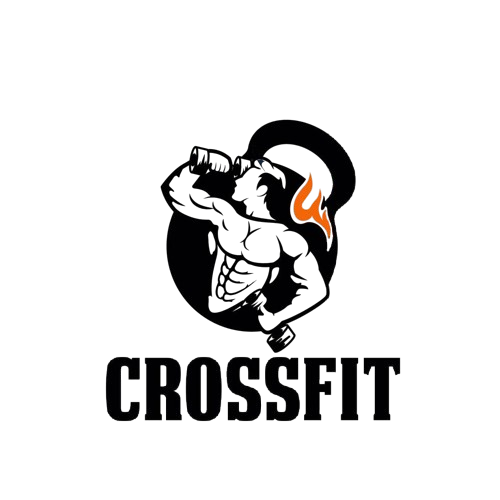Embarking on a CrossFit journey introduces you to a world where limits are pushed, and community spirit thrives. But before you lace up your workout shoes and dive into this transformative fitness regimen, there’s a crucial question to consider: How much does CrossFit cost? Whether you’re a fitness enthusiast curious about adding CrossFit to your routine or someone looking for a complete lifestyle overhaul, understanding the financial commitment involved is essential. Let’s unravel the mystery behind the cost of CrossFit, ensuring you’re well-informed before taking the plunge.
Understanding CrossFit Membership Costs
CrossFit has become an immensely popular fitness regimen, known for its community-driven approach and high-intensity functional movements. However, one of the first questions that potential members often ask is, “How much does CrossFit cost?” The answer is not straightforward, as membership costs can vary widely depending on several factors, including location, ownership, the range of facilities offered, and the level of coaching expertise.
At its core, CrossFit is more than just a gym membership; it’s an investment in your health and fitness journey. The cost of a CrossFit membership reflects the personalized coaching, community support, and access to specialized equipment and facilities. Most CrossFit gyms, known as “boxes,” offer tiered membership options based on the frequency of attendance, ranging from unlimited monthly memberships to punch cards for a specific number of classes.
Another aspect to consider is the value of the CrossFit community itself. This supportive network often plays a crucial role in motivating members to achieve their fitness goals. The community aspect can significantly enhance the overall experience and results, which is something that is hard to quantify but incredibly valuable. Despite the seemingly high upfront cost, many find the investment worthwhile for the unique blend of personalized coaching, community support, and effective programming.
Below is a table that outlines a general overview of CrossFit membership pricing, based on a survey of various CrossFit gyms across different locations. Please note that these prices are averages and can vary significantly by location and the specific offerings of each box:
| Membership Type | Monthly Cost (Average) | Notes |
|---|---|---|
| Unlimited | $150 – $250 | Access to all classes and open gym times |
| 3x per week | $100 – $200 | Limited to three classes per week |
| 2x per week | $75 – $150 | Limited to two classes per week |
| 10-class punch card | $150 – $200 | Valid for a limited time; usually 3-6 months |
| Drop-in rate | $20 – $30 | Single class rate for visitors or occasional attendees |
When considering the cost of a CrossFit membership, it’s important to look beyond the numbers and understand the value it brings to your life. A CrossFit box is not just a place to work out; it’s a community hub where you are likely to form meaningful relationships, receive personalized coaching tailored to your fitness level and goals, and have access to a variety of classes and equipment not found in traditional gyms. This comprehensive approach to fitness can make the investment in a CrossFit membership more valuable than its price tag might suggest.
Ultimately, the best way to understand the cost and value of a CrossFit membership is to visit local boxes, talk to the coaches and members, and possibly try out a class or two. This hands-on experience can provide a clearer picture of what you’re investing in and whether it aligns with your fitness goals and budget.
Initial Costs and Sign-Up Fees
When embarking on your CrossFit journey, understanding the initial costs and sign-up fees is crucial. These expenses are your first step into the world of CrossFit, a fitness regimen that has gained immense popularity for its effectiveness and community spirit. However, before you can reap the benefits of high-intensity workouts and personalized coaching, you’ll need to navigate the financial aspects of joining a CrossFit gym, also known as a “box.”
The cost of joining a CrossFit box can vary significantly depending on your location, the box’s amenities, and the level of coaching provided. Typically, the sign-up fee is a one-time charge that covers administrative costs and sometimes includes a fundamentals or on-ramp course, essential for acquainting newcomers with CrossFit’s unique terminology, techniques, and safety protocols. After the initial sign-up fee, members are usually required to select a membership plan. These plans can range from monthly and quarterly to annual options, with many boxes offering discounts for longer commitments. It’s also not uncommon for CrossFit gyms to provide special rates for students, military personnel, and first responders.
Another factor to consider is the cost of gear. While CrossFit doesn’t require a significant investment in personal equipment, certain items, such as appropriate footwear, a good quality jump rope, and workout attire that can withstand rigorous sessions, are advisable. These costs can add up, especially if you’re starting from scratch. Therefore, it’s essential to factor them into your initial budgeting for CrossFit.
- Understanding the sign-up fee structure and what it includes.
- Comparing membership plans and their respective costs.
- Considering additional costs for gear and apparel.
- Looking for discounts or special rates that may apply to you.
- Evaluating the overall value of the CrossFit box considering its amenities, community, and coaching quality.
Delving into the world of CrossFit requires not only a physical commitment but also a financial one. The initial costs and sign-up fees are your gateway to a fitness community that prides itself on inclusivity, support, and pushing physical boundaries. By carefully considering these expenses, you can ensure a smooth start to your CrossFit experience, setting the stage for success both inside and outside the gym. Remember, the value of a CrossFit membership extends beyond the workouts; it includes becoming part of a supportive community that encourages personal growth, resilience, and health.
Monthly Membership Pricing Variations
The cost of a CrossFit membership can vary significantly from one box (gym) to another, influenced by several factors including location, facilities, and the range of classes offered. Typically, urban centers with a higher cost of living will see CrossFit gyms charging more to cover their operational costs. Conversely, gyms located in more suburban or rural areas might offer more competitive rates. It’s not just the geography that impacts price; the quality of the facilities and the expertise of the staff also play a crucial role. A gym with state-of-the-art equipment and highly qualified trainers may justify higher membership fees.
Another aspect that affects monthly membership pricing is the type of membership plan. Most CrossFit gyms offer a range of options from unlimited classes to a certain number of classes per week or month. Unlimited plans are the most expensive, but for those who attend classes regularly, they offer the best value. Some gyms also offer off-peak memberships at a reduced rate, which could be a viable option for those with flexible schedules. Additionally, discounts are often available for students, military personnel, and first responders, reflecting the community-oriented ethos of many CrossFit boxes.
When considering a CrossFit gym, it’s essential to evaluate not only the cost but also what you get for your money. A higher fee might include benefits such as more personalized coaching, nutritional advice, and access to special events and seminars. Always visit the gym, meet the coaches, and check out the facilities before making a decision.
- Location and cost of living impact on pricing
- Quality of facilities and staff expertise
- Variety of membership plans
- Availability of discounts for certain groups
- Additional benefits included in the membership fee
Drop-In and Class Pack Options
Exploring the landscape of CrossFit can reveal a variety of membership options designed to cater to different needs and lifestyles. For those who travel frequently or are looking to test the waters, drop-in rates offer a flexible, no-commitment-required avenue to attend classes. Typically, these rates range from $20 to $30 per session, depending on the location and amenities offered by the gym.
For individuals seeking a more committed relationship with their fitness regimen without the long-term tether of a monthly membership, class pack options serve as an ideal middle ground. These packs can vary greatly in size, from 5 to 20 classes, allowing for a tailored approach to fitness that can accommodate varying schedules and fitness goals. The cost-effectiveness of class packs increases with size, making them an attractive option for regular attendees. Moreover, these packs often come with an expiration date, encouraging users to maintain a regular workout schedule.
In addition to providing a cost-saving opportunity, class packs foster a sense of community and commitment amongst participants. They allow individuals to become familiar faces in classes, leading to increased motivation and accountability in one’s fitness journey.
| Option | Cost | Validity Period |
|---|---|---|
| Single Drop-In | $20 – $30 | 1 Day |
| 5-Class Pack | $90 – $150 | 2 Months |
| 10-Class Pack | $170 – $250 | 4 Months |
| 20-Class Pack | $320 – $450 | 6 Months |
| Monthly Membership | $150 – $250 | 1 Month |
The selection between drop-in rates and class packs largely hinges on an individual’s lifestyle, frequency of travel, and level of commitment to a consistent fitness routine. Both options provide a bridge to CrossFit, allowing newcomers to gradually integrate into the community or seasoned athletes to maintain flexibility in their training schedules. Understanding these options ensures that every CrossFit enthusiast can find a plan that resonates with their personal fitness journey, making the path to achieving one’s health and fitness goals as accommodating and effective as possible.
Additional Fees and CrossFit Gear
When it comes to CrossFit, the initial membership fee is just the beginning. Enthusiasts soon realize that there are additional costs associated with fully embracing the CrossFit lifestyle. These extra expenses can vary widely depending on personal choices and the specific requirements of the CrossFit gym you join. Understanding these costs upfront can help you budget more effectively and avoid any surprises down the road.
Firstly, many CrossFit gyms charge fees for specialized classes or seminars that go beyond the standard workout routines. These can include advanced lifting techniques, nutritional counseling, and competition preparation classes. Additionally, CrossFit participants often find themselves investing in specialized gear. While some items are essential, like quality workout shoes and comfortable, durable workout clothing, others such as personalized jump ropes, knee sleeves, and weightlifting belts are not mandatory but can enhance your training experience.
Another area of expense is recovery tools. High-intensity workouts can take a toll on the body, and tools like foam rollers, massage guns, and supplements for muscle recovery become appealing. While not all CrossFit athletes will choose to invest heavily in every category, it’s common for individuals to select a few key areas where they feel additional spending will most benefit their performance and recovery.
- Membership Fees – Varies by location and level of access.
- Specialized Classes or Seminars – Advanced training sessions often carry an extra charge.
- Workout Gear – Essential items include shoes and clothing, with optional accessories like gloves and wrist wraps.
- Recovery Tools – Foam rollers, massage guns, and supplements can aid in faster recovery.
- Competition Fees – For those who wish to compete, entry fees for events must be considered.
Embracing the CrossFit lifestyle can indeed require a significant financial commitment beyond the monthly gym membership. From gear and clothing to classes and recovery tools, the costs can add up. However, many find the investment worthwhile for the benefits received, not just in physical fitness but also in community and personal achievement. When considering joining a CrossFit gym, it’s important to factor in these additional expenses to get a comprehensive view of the financial commitment involved.
Comparing Costs: CrossFit vs. Traditional Gyms
When evaluating the costs associated with CrossFit versus traditional gyms, several factors come into play, affecting the overall value and expense for individuals seeking to enhance their fitness journey. CrossFit, known for its high-intensity functional movements and community-driven environment, often comes with a higher price tag compared to traditional gyms. This is due in part to the personalized coaching, specialized equipment, and smaller class sizes that CrossFit boxes offer. These elements contribute to a more tailored fitness experience but at a cost that can be significantly higher than that of traditional gym memberships.
Traditional gyms, on the other hand, typically provide a more generalized fitness environment with a wide range of equipment and facilities available to members. The cost of membership can vary widely depending on the location, amenities offered, and the brand of the gym. However, these memberships are often more affordable than CrossFit because they lack the structured classes and personalized coaching. For individuals who are self-motivated and have a clear understanding of their fitness goals and how to achieve them, traditional gyms can be a cost-effective choice. Additionally, many traditional gyms offer flexible membership plans, including off-peak hours pricing, which can further reduce costs.
It is also important to consider the additional value that comes with a CrossFit membership, such as the sense of community, accountability, and often, the inclusion of nutritional guidance and lifestyle coaching. These aspects can significantly enhance an individual’s fitness experience and contribute to achieving faster and more sustainable results. While the initial investment in CrossFit may be higher, the holistic approach to fitness and wellness could lead to long-term savings by potentially reducing healthcare costs and improving overall quality of life. When comparing costs, it’s crucial to evaluate not just the price, but the value provided in relation to one’s personal fitness goals and preferences.
Additional Insights on Fitness Investment Choices
Choosing between CrossFit and traditional gyms ultimately comes down to personal preference, fitness goals, and budget. It’s essential to visit local facilities, try introductory classes, and speak with members and staff to get a feel for the environment and community. Remember, the best fitness investment is one that you will consistently utilize and enjoy, leading to sustained health benefits and satisfaction. Whether it’s the camaraderie and intensity of CrossFit or the versatility and independence of traditional gyms, ensuring the choice aligns with your lifestyle and goals is key to a rewarding fitness journey.
- Evaluate personal fitness goals and preferences.
- Consider the importance of community and coaching in your fitness journey.
- Research local CrossFit boxes and traditional gym memberships for pricing and amenities.
- Take advantage of trial memberships or classes.
- Assess the long-term value and potential health benefits of each option.
Saving Money on CrossFit Expenses
CrossFit, known for its dynamic approach to fitness and community spirit, can sometimes be perceived as an expensive endeavor. However, there are several strategies to reduce the costs associated with CrossFit without compromising on the quality of your training experience. By being mindful of membership options, equipment purchases, and class participation, you can make CrossFit both affordable and rewarding.
Firstly, consider the membership plans available at your local CrossFit box. Many boxes offer tiered pricing based on the number of classes you attend per week. Opting for a plan that matches your actual attendance can lead to significant savings. Additionally, some boxes provide discounts for upfront payments or long-term commitments. Don’t hesitate to negotiate or ask for any available discounts; you might be surprised by the flexibility of some CrossFit gyms.
Another area where savings can be realized is in the purchase of CrossFit gear and equipment. While it’s tempting to buy the latest shoes or workout apparel, often, these items are not necessary for beginning your CrossFit journey. Start with basic, durable workout gear, and only invest in specialized items as you progress and as they become necessary. Moreover, many CrossFit exercises rely on body weight, meaning expensive equipment purchases can be minimized. Purchasing second-hand equipment or taking advantage of sales can further reduce expenses without compromising the quality of your workout.
Maximizing Your CrossFit Investment
Getting the most out of your CrossFit membership extends beyond the cost. Engaging fully in the community, taking advantage of open gym times, and participating in workshops or events hosted by the gym can enhance your experience. These opportunities not only improve your skills but also deepen your connection to the CrossFit community, making your investment in time and money even more valuable.
Understanding the True Value of CrossFit
When evaluating the costs associated with CrossFit, it’s crucial to consider the value it brings to your life. The benefits of improved physical health, mental well-being, and a supportive community often outweigh the financial investment. By approaching CrossFit with a strategic mindset towards expenses, you can enjoy all these benefits while maintaining your budget.
| Expense Category | Ways to Save | Additional Tips |
|---|---|---|
| Membership Fees | Choose the right plan, negotiate discounts | Ask about off-peak pricing or special offers |
| Gear and Equipment | Buy basic, durable items; consider second-hand | Invest in quality when necessary, look for sales |
| Workshops/Events | Participate in free or discounted community events | Volunteer for events for free access or discounts |
| Supplements/Nutrition | Focus on whole foods, buy in bulk | Prepare meals at home, avoid processed options |
In conclusion, while CrossFit has a reputation for being a costly fitness approach, with careful planning and strategic choices, it’s possible to enjoy all the benefits of CrossFit without breaking the bank. By focusing on what truly adds value to your experience and making informed decisions about memberships, gear, and participation, you can make your CrossFit journey both financially sustainable and deeply rewarding.







